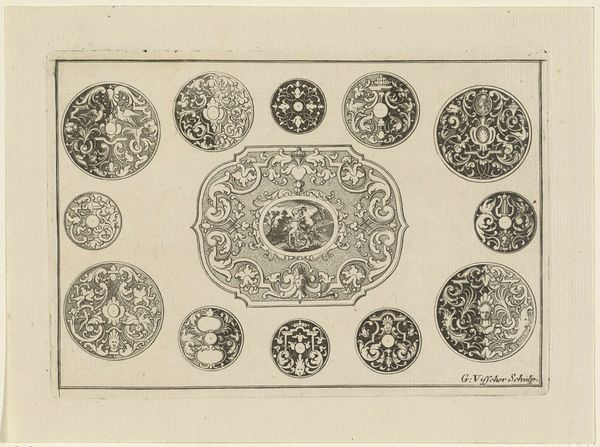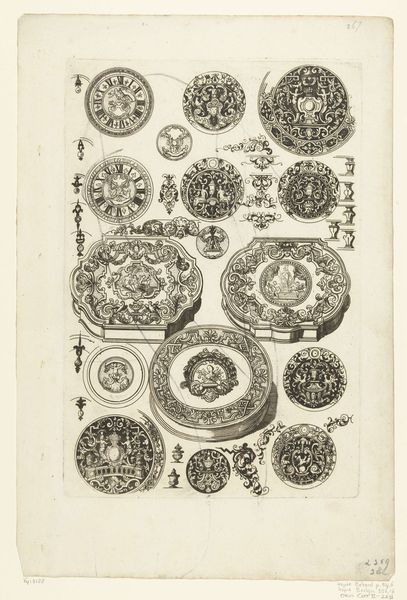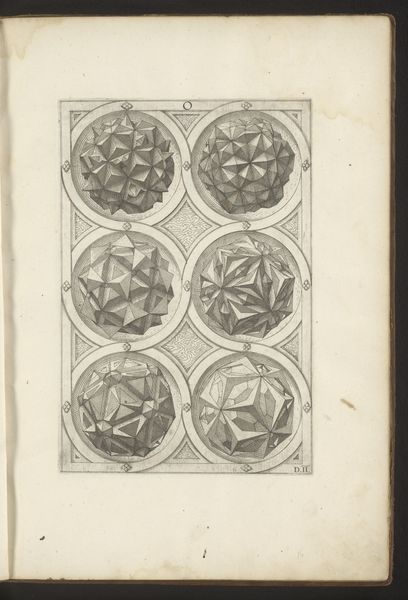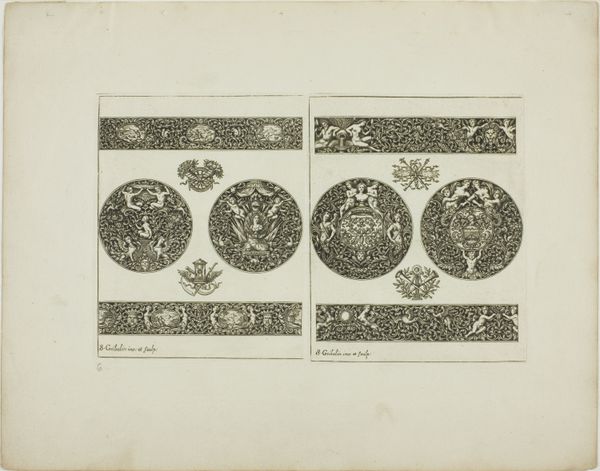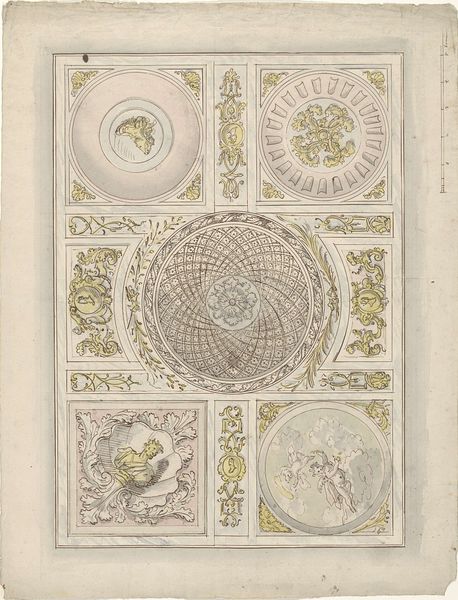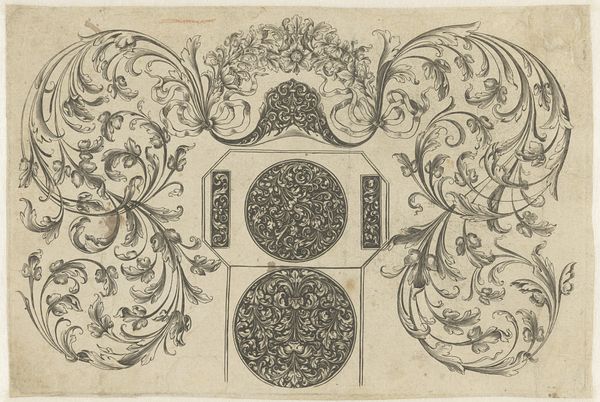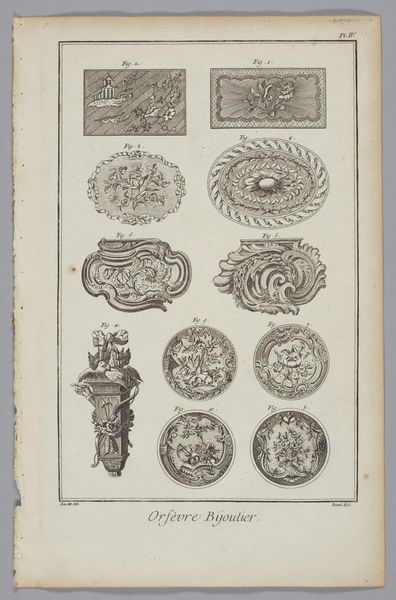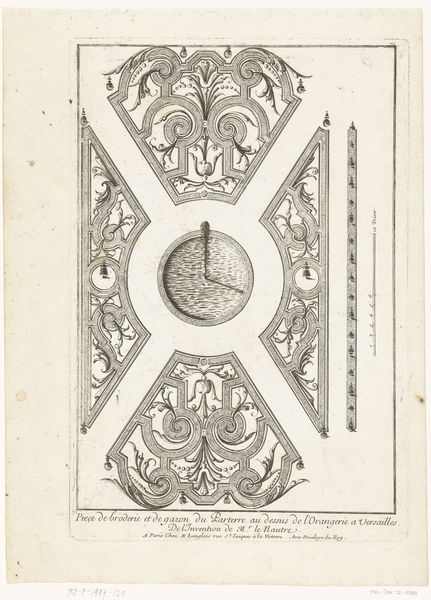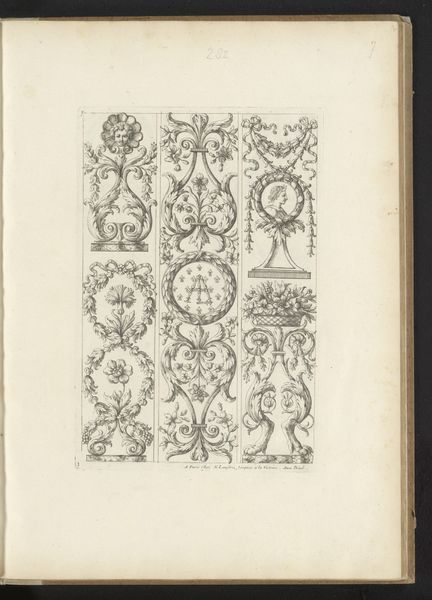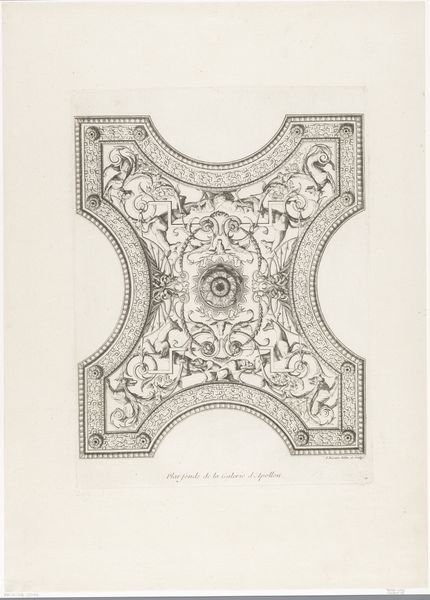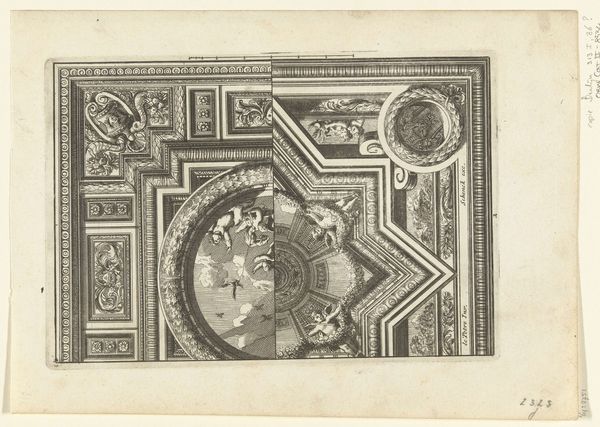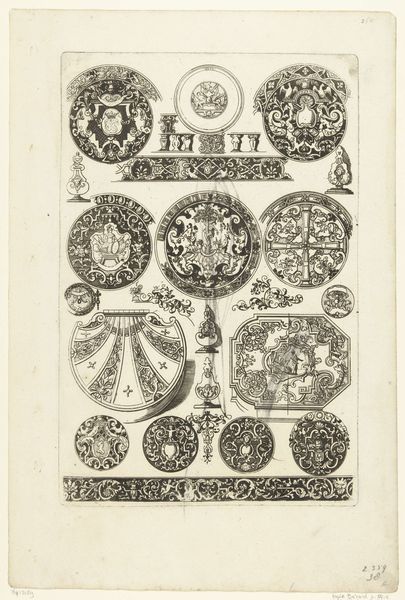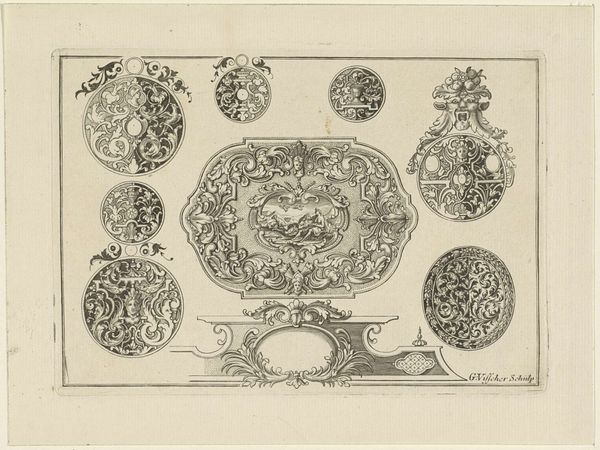
drawing, graphic-art, ornament, print, paper, engraving
#
drawing
#
graphic-art
#
ornament
#
baroque
# print
#
paper
#
geometric
#
line
#
decorative-art
#
engraving
Dimensions: 194 × 158 mm (image/plate); 296 × 232 mm (sheet)
Copyright: Public Domain
Editor: This is Plate Four from the Book of Ornament, created in 1704 by Simon Gribelin II. It's an engraving printed on paper. The composition is based on geometric and organic shapes, full of intricate patterns. It's really mesmerizing. How do you interpret this work as a document of its time? Curator: Given that it's titled 'Book of Ornament,' its societal function is primary: disseminating decorative ideas. Gribelin wasn't necessarily trying to express his individual genius, but rather to provide patterns and inspiration for artisans. What do you think this reveals about the social role of the artist? Editor: That’s a great point! It positions the artist more as a facilitator of design than as an individual creator, fulfilling commissions for elaborate décor. This pre-dates the Romantic idea of the solitary artistic genius, right? Curator: Precisely. Consider also that the Baroque period prized elaborate displays of wealth and power. Ornament like this would be integrated into architecture, furniture, and even clothing, serving to reinforce social hierarchies. These pattern books were tools that helped disseminate a specific visual language amongst different levels of society. How might the proliferation of such patterns have influenced tastes and expectations in interior design during that time? Editor: It suggests a desire for accessible luxury. By making these designs readily available, it allows for broader adaptation, and it is no longer solely for elite circles. So the pattern book acts almost as a democratizing force, allowing more widespread access to artistic motifs, while subtly reinforcing a prevailing aesthetic and the culture attached to it. Curator: That's a fascinating idea, seeing it as democratizing design. It also prompts the question of the distinction between “art” and “craft” at the time, and the social value attributed to each. Thanks, I'll definitely consider that going forward. Editor: Thank you, this opened up so many new directions for me!
Comments
No comments
Be the first to comment and join the conversation on the ultimate creative platform.
